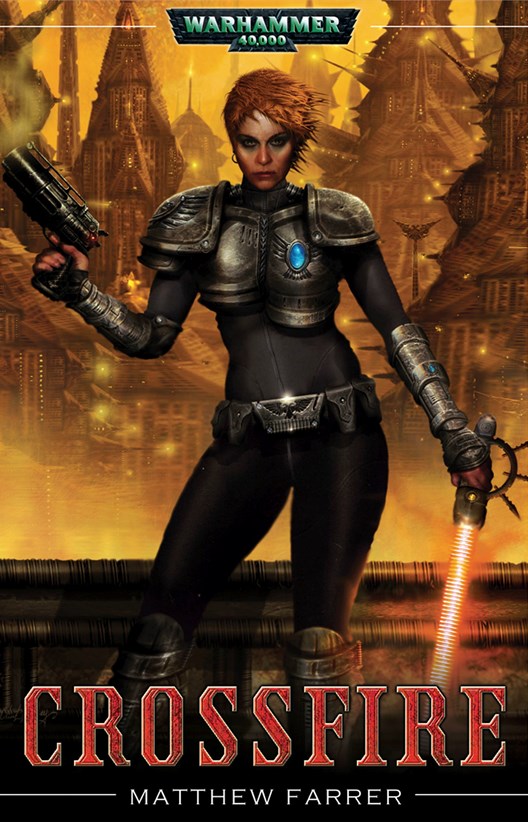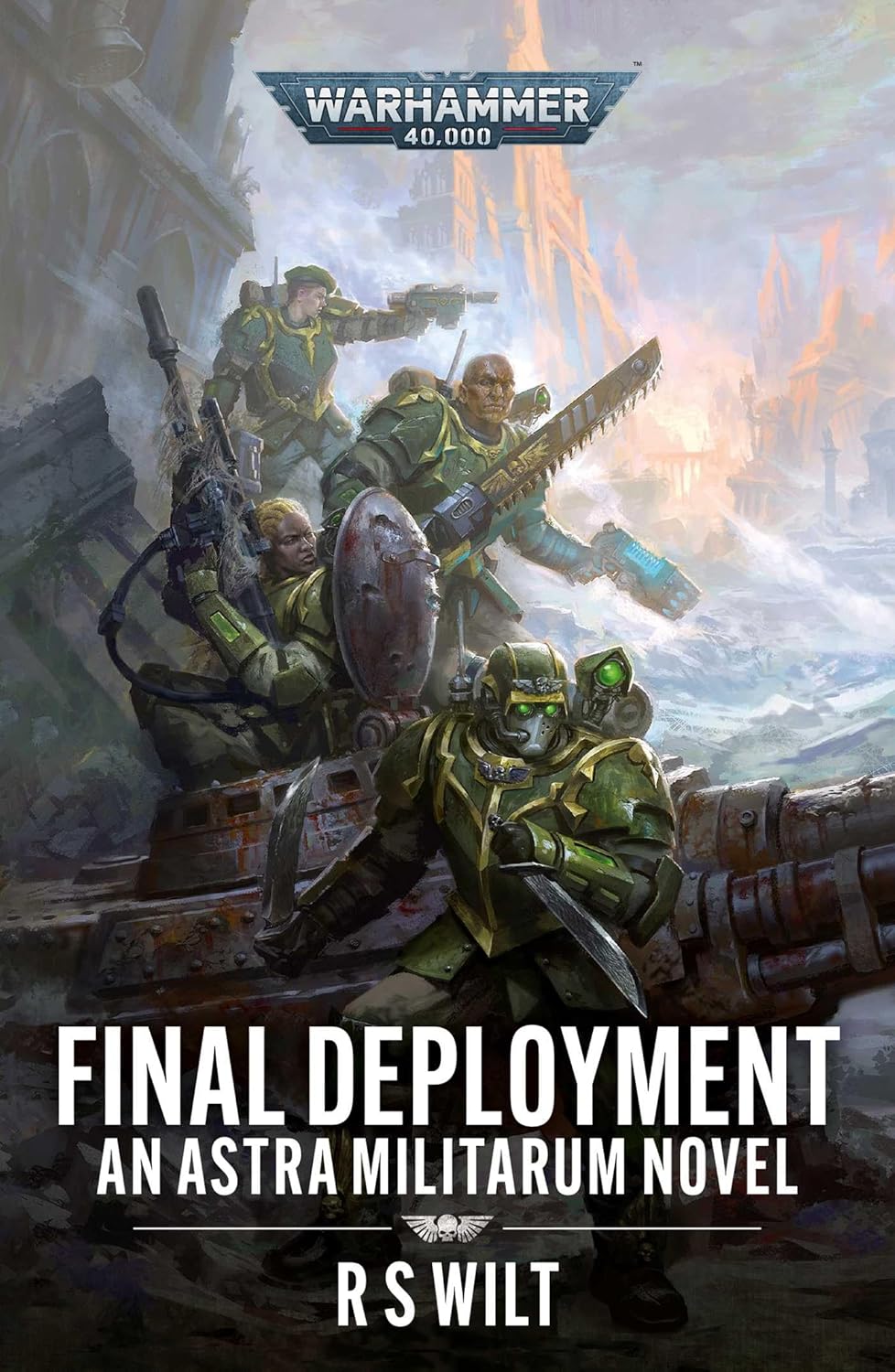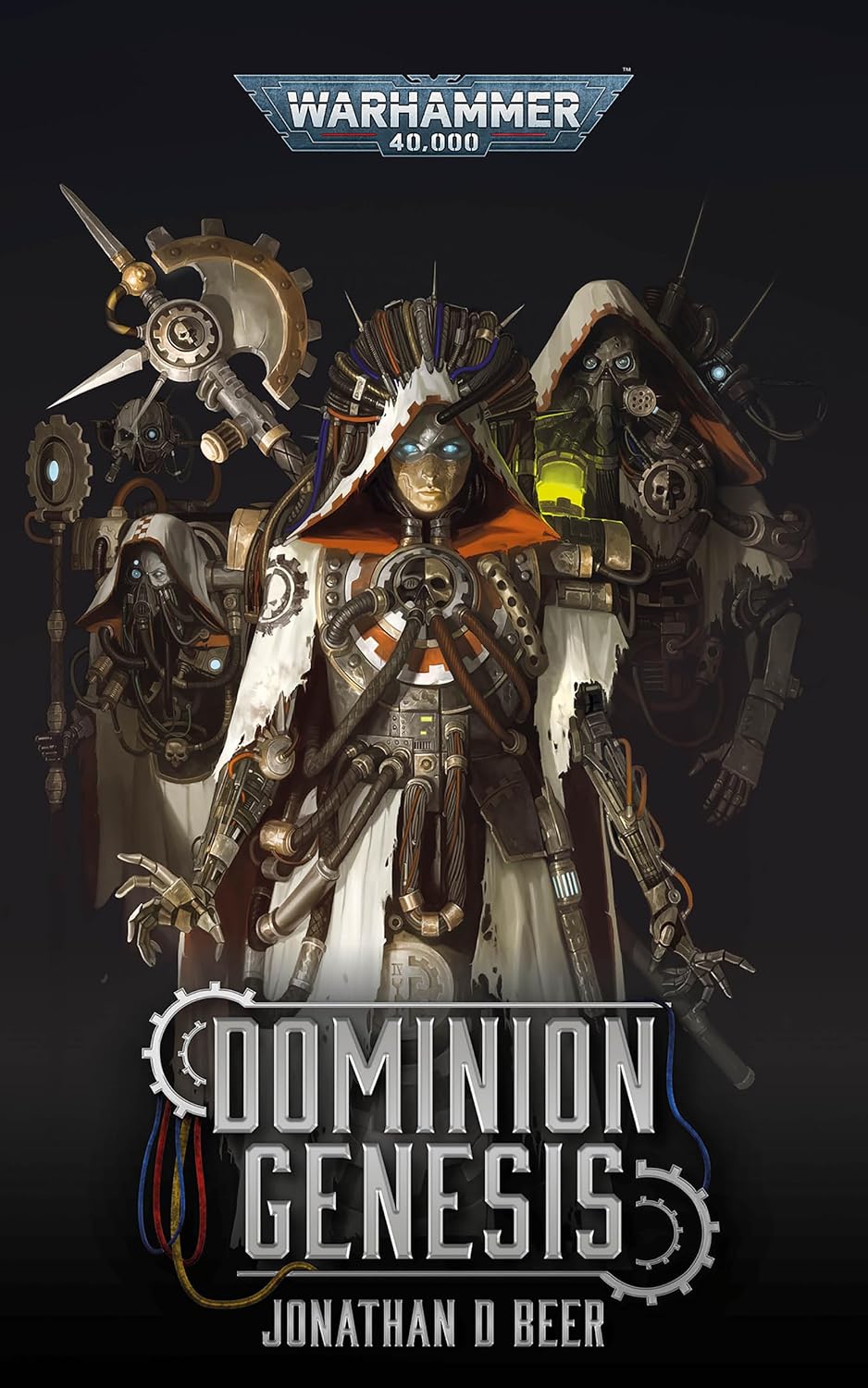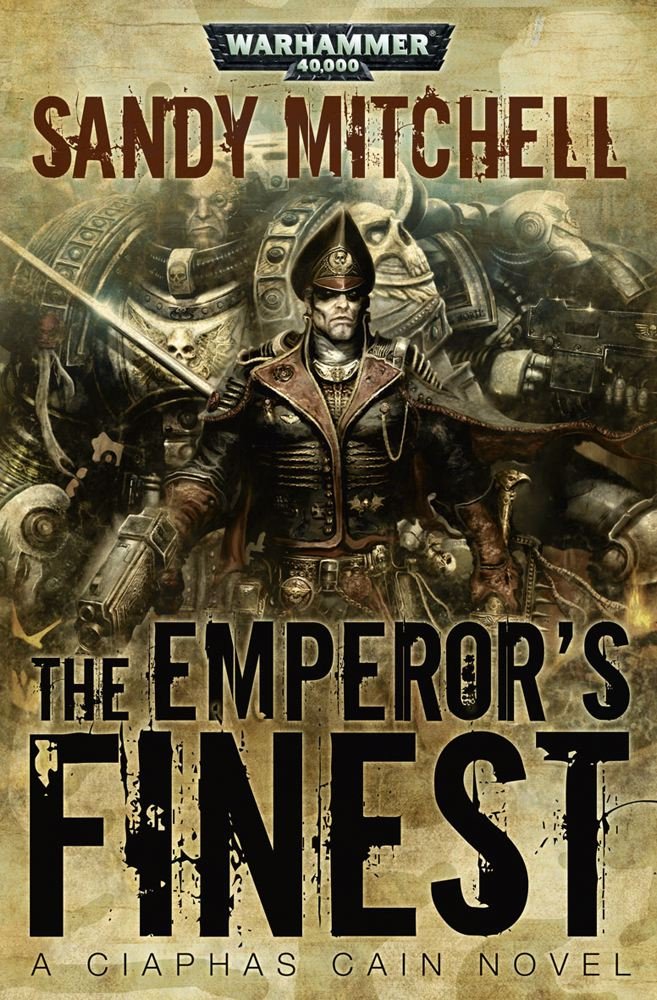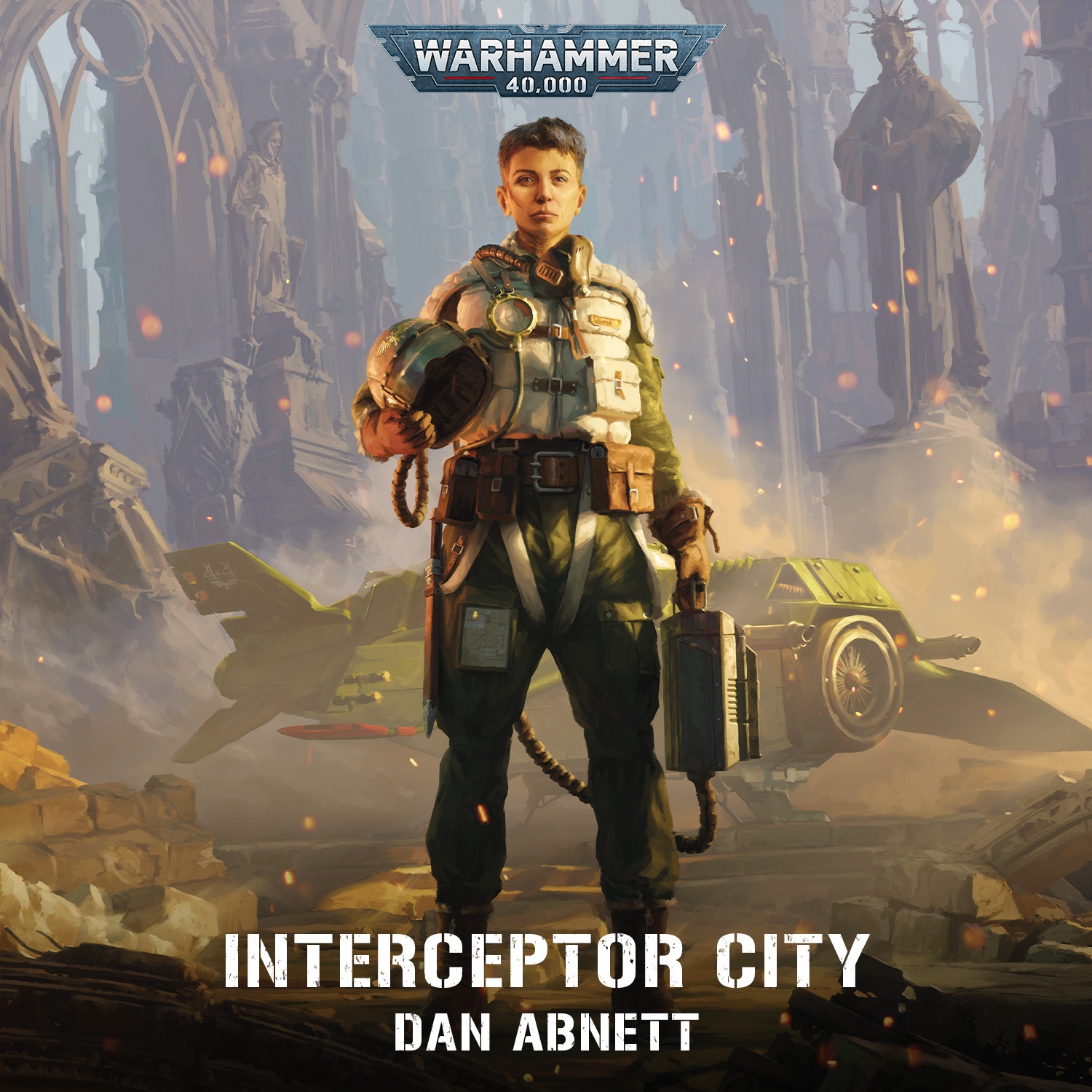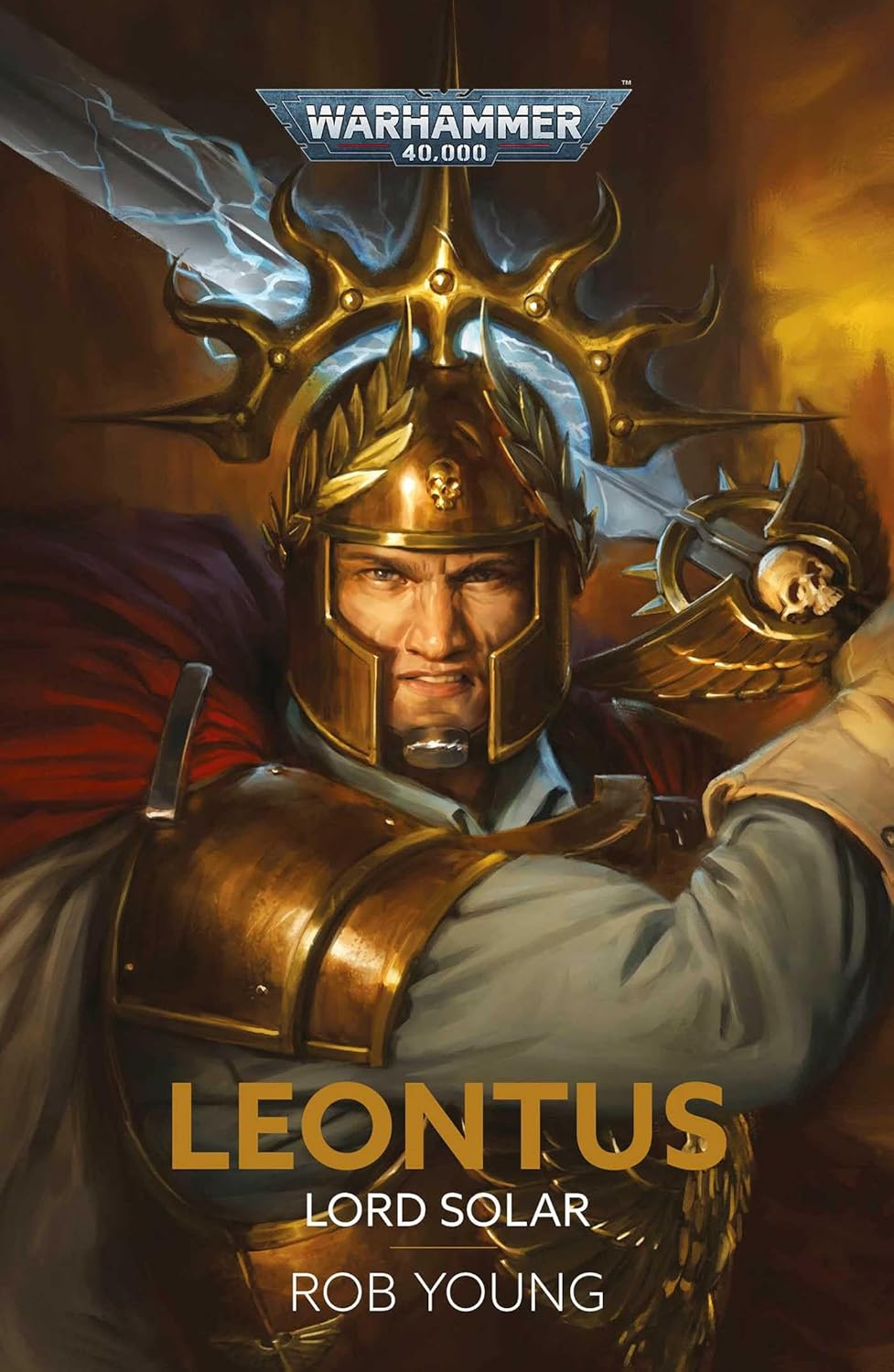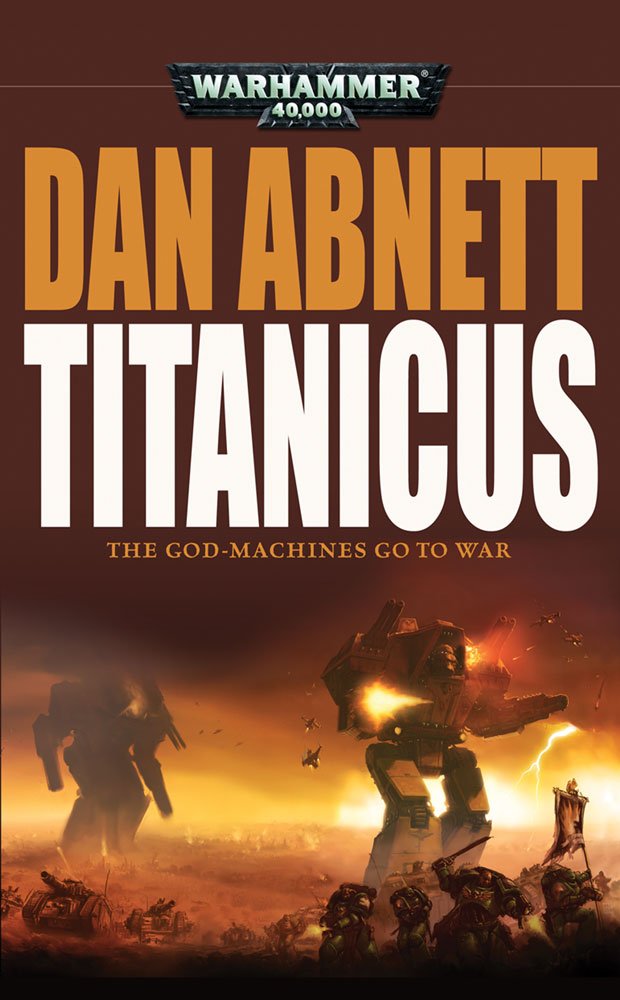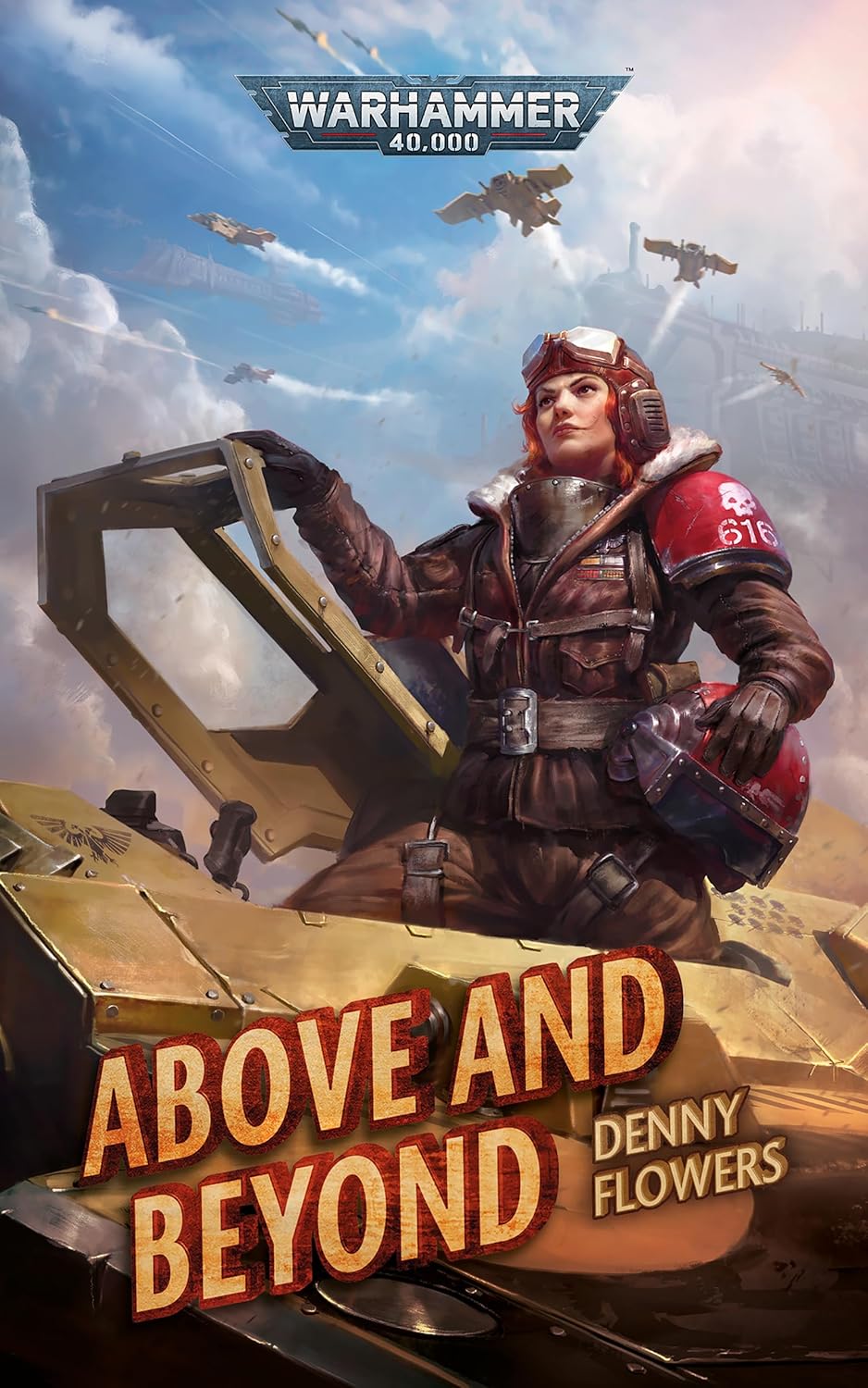
Publisher: Black Library (Audiobook – 12 October 2024)
Series: Lucille von Shard series – Book Two
Length: 12 hours and 52 minutes
My Rating: 5 out of 5 stars
Amazon
Denny Flowers presents one of the most ambitious and captivating Warhammer 40,000 novels of 2024, with the brilliant and deliciously cynical read, Above and Beyond.
As a massive fan of all things Warhammer 40,000 fiction, I have been spending awful lot of time diving into all the recently released novels and audiobooks from the franchise (see the ever-expanding Warhammer tab to the right). As such, I have become quite familiar with the newer authors contributing to this massive expanded grimdark universe, and there are several rising stars that my radar is firmly fixed on. This includes the very impressive Denny Flowers, who honestly has the potential to become one of the best authors in this franchise. While he has so far only written three books (including this one), every single new novel from Flowers is a step above the last, and I have really gotten attached to his fantastic imagination and writing style. His first book, Fire Made Flesh, was an awesome book, and it ended up being one of my favourite debuts of 2021. However, Fire Made Flesh was quickly overshaded in my mind by the author’s brilliant second book, Outgunned.
Outgunned was an outstanding read that dove into the darker side of the already grim Warhammer 40,000 universe in all the right ways. Following a propaganda expert as he attempts to create an epic film based around a legendary fighter ace, Outgunned proved to be an excellent read, especially once the protagonist beings to understand just how jaded his chosen subject is. However, a rampaging ork invasion and elaborate political intrigue on a miserable swamp planet brings events even further to a head, and the protagonists endure a gruelling and desperate battle to survive. I really loved Outgunned thanks to its unique narrative, and it has had a proud place in my favourite Warhammer 40,000 novel list. Due to how impressive I found Outgunned to be, I was very excited when I heard that a sequel was out this year and made sure to grab Above and Beyond the first chance I could.
Kile Simlex is a broken man. Once one of the most successful propagandists in the Imperium of Man, Simlex’s films used to inspire untold millions in the name of the God Emperor, ensuring innumerable new recruits to humanity’s armies. However, a cursed assignment to the swamp planet of Bacchus showed him the realities of war and innate corruption of the Imperium, while his chosen subject, the eternally cynical fighter ace Lucille von Shard, proved to be both a skilled fighter and a deadly disappointment.
Years later, Simlex is now a shadow of his former self. Emotionally and physically scarred from his experiences on Bacchus, Simlex’s attempts to show the Imperium’s citizens the real horrors of war ensured that he was dismissed from his lofty position. Now forced to toil as lowly scribe, Simlex has grown bitter as his footage from Bacchus was used to create a crass and untrue popular film which elevated Flight Command von Shard to the status of legendary hero. However, Simlex is about to find his chance of redemption when he once again becomes involved with the dangerous von Shard family.
Attempting to live in obscurity, Simlex’s life is turned upside down when Shard’s brother, Commissar Tobia von Shard enters his office. Commissar von Shard has intercepted a cryptic message sent to Simlex from Shard asking for help, and the commissar is determined to deliver assistance, one way or another. Forced to accompany the commissar on his journey, Simlex travels to Deighton, a world in open rebellion, to discover a war being fought using propaganda films and heroic shots of Shard in action. However, the real Shard is a shadow of her former self, worn down by war, guilt and her status as a hero, and determined to push Simlex away. But with a deadly xenos pilot seeking to destroy her legacy, and a manipulative new propagandist controlling events from on high, Simlex and Shard both need to work together to survive.
Denny Flowers honestly gets better with every single book he writes as Above and Beyond was a particularly impressive and powerful piece of Warhammer 40,000 fiction. Providing Flower’s own distinctive take on the glorious wars of the Warhammer 40,000 universe, Above and Beyond was a memorable, addictive and emotionally charged novel that had me hooked the entire way through with its complex context and brilliantly damaged characters. This was such an exceptional read, and I have very little choice but to give it a well-deserved five-star rating.
Above and Beyond has an excellent and exciting narrative that both stands on its own, while also serving as a compelling sequel to Outgunned. Shown from the perspective of former propagandist Kile Simlex, whose actions following the previous book have resulted in a substantial fall from grace, Above and Beyond sees him forced back into the chaos of war after his former muse, Lucille von Shard, apparently seeks his help. Forcibly recruited by Shard’s commissar brother, Simlex traves to the planet Deighton, and finds himself caught up in an unusual war, as brutal Imperial soldiers fight against rebelling civilians, while expansive propaganda campaign drives the carnage to new heights. This first part of the story is very well done, as it catches up the reader quickly to both the events of Outgunned and the subsequent fallout of Simlex’s actions, while also setting up the new storyline.
The rest of Above and Beyond’s story turns out to be exceedingly intense and compelling, as Flowers tells a particularly unique Warhammer 40,000 narrative. While there is a focus on aerial combat and action, Above and Beyond is mostly a gritty and complex thriller, with the protagonist attempting to uncover various secrets and counter deceitful and dangerous opponents. This results in an intense character-driven tale as you follow the tired, traumatised, and pessimistic protagonist as he attempts to uncover dark secrets while also coming into deep emotional conflict with Shard. Flowers takes the narrative in some great directions, especially thanks to a mysterious xenos opponent, some outstanding supporting characters, and a brilliant combination of plot lines. There are some heartbreaking scenes of tragedy, moments of powerful personal growth, a few very clever twists and a ton of compelling action, all leading up to a fantastic conclusion. While I won’t go into too much detail here, it was all sufficiently epic, and you find yourself coming out of Above and Beyond extremely satisfied, especially as Flowers continues to develop his major protagonists in some moving and captivating ways. The author also leaves a few storylines and questions open to explore in some potential future entries, and that is something I am particularly keen for.
Flowers has a unique style for his Lucille von Shard Warhammer 40,000 novels, and it is one that I have really come to appreciate. Exclusively told from the perspective of main character Kile Simlex, Flowers seeks to show an alternate side to the many wars of the Warhammer 40,000 universe, one that paints the supposedly good Imperium in a harsh and selfish light. While novels that show the many inequities and issues of the Imperium and the wider Warhammer 40,000 universe are nothing new (indeed it’s an excellent recurring theme), I felt that Flowers took it up to 11 in Above and Beyond, and I loved how superbly and relentless cynical the book got. Flowers’s dive into the inevitable propaganda side of humanity’s war engine once again proved to be particularly fascinating, and it allowed for some fascinating sequences that highlight human nature and alternate views of the truth. This focus on propaganda, the impacts of fighting, and the dark secrets of the Imperium, leads to a brilliantly dark, character-driven novel that goes in some excellent directions. I appreciate how this was more of a down-to-earth, politically charged, military thriller, rather than a full-on action epic, although there still are some great flight combat sequences against shadowy foes. This compelling and distinctive vein of storylines and themes helped to turn Above and Beyond into one of the more memorable Warhammer books of 2025, and I honestly could not stop listening to it.
I cannot emphasise enough what a clever Warhammer 40,000 novel Above and Beyond was, as Flowers dives right into the corrupt heart of this grimdark universe. Readers are gifted with a brutally honest look behind the Imperial military curtain, and I loved seeing the protagonist’s continued realisation at just how much corruption and lies there are. The examination of the role that propaganda plays in keeping the manipulative system in place was also very cool, especially as the book devolves into a war of misinformation and counter-films rather than a typical firefight. This includes various scenes that show depictions of camera shots or video editing, which were not only fascinating and darkly fun, but helped ensure that Above and Beyond was a particularly distinctive read. Throw in some intriguing looks at another major faction, whose manipulative influence on several fronts really increase the intensity of the plot, and there is a lot for veteran Warhammer 40,000 fans to sink their teeth into.
As with most Warhammer 40,000 novels, Above and Beyond can be enjoyed as a standalone novel by most readers, as does not take long to get absorbed in its haunting and powerful story. Flowers does a great job recapping and re-examining key events from Outgunned here, which allows readers to follow the continuing storylines without issue. Readers also don’t need an abundance of pre-knowledge about the universe to enjoy the story, although I really do appreciate how Flowers captured the gothic and dark feel of the fantastic setting surrounding the entire franchise. However, to get the most enjoyment out of Above and Beyond, you should check out Outgunned first. The first book in the series did an excellent job introducing the main protagonists and setting them on a dark adventure that left them damaged and with a new view of the universe around them. Above and Beyond perfectly examines the aftermath of this first adventure, and the result is extremely moving and a little heartbreaking. The changes in the characters’ personalities and mentalities from the first book is beautifully done, and so much of Above and Beyond’s plot and impact is focused on how both Simlex and Shard are dealing with their trauma. Reading Outgunned first helps you appreciate Flower’s clever character writing in Above and Beyond just a little bit more, and I know I got a lot more emotional impact from this sequel because of my experiences with the first Lucille von Shard novel.
So much of Above and Beyond’s impact lies in its exceptional characters, all of whom have brilliant arcs in this book. The most prominent of these is series protagonist and perspective character, Kile Simlex. Once a gifted propogandist who made films without thought or question, Simlex is now a bitter shell of his former self. His revelations about how corrupt the Imperium is and his attempt to show it with a film have led to him losing everything, and his ire has turned towards Shard, who he believes opened his eyes. Despite being physically and mentally battered, Simlex still has his principles, which he desperately tries to maintain even when faced with danger and the insanity of the von Shards. I loved seeing Simlex attempting to deal with his trauma throughout Above and Beyond, and it was refreshing for a Warhammer 40,000 series to dive into the consequences of the dark events that the characters witness. Simlex proved to be a great perspective character, and I liked his insights on the world around him, especially as it is coloured with more cynicism and insight into reality of the Imperium and the wars they fight. His appreciation for the art of film making, which includes multiple instances of him assessing other people’s propaganda creations, adds an interesting artistic edge to the book, although Flowers often utilises this to get even more cynical. I also enjoyed the return of the protagonist’s remaining seer-skull, an ancient servo-skull designed for filming and projecting, which offers some intriguing alternate insights into the Simlex’s mind, while also containing a fun hidden twist. Cleverly continuing the character’s storylines from the first book, while also diving into the trauma surrounding him, I felt that Flower’s writing of Simlex here was particularly good in Above and Beyond and ensured that he was an awesome centre to the entire book.
The other main protagonist of the book is Flight Commander Lucille von Shard, who enters this book as one of the Imperium’s most revered and famous fighter aces. However, after the events of Outgunned, Shard is a changed woman, broken by her experiences and the various terrible things she has witnessed/participated in. At the same time, she has been forcibly painted as a renowned hero of the Imperium and now finds herself with the unwanted responsibility of being a figure who inspires others to fight and die. As such, the Shard Simlex finds in Above and Beyond is a shell of her former self, forced to play along as a propaganda figure without doing any real flying. Despite this, Shard retains all her trademark arrogance and antagonism, and she plays off Simlex perfectly, especially as both characters blame each other for their current lives. Flowers did an amazing job turning one of his most confident characters into a shattered being, and Shard’s change in personality in Above and Beyond is both moving and understandable. While Shard tries to be as unlikable and hostile as possible, there is always a sense of loss and despair around her that ensures you are committed to finding out her story. Combine that with her still excellent piloting abilities and Shard is such an outstanding alternate protagonist to Simlex, and I really appreciate the intense character work that Flowers puts into her.
Aside from Simlex and Shard, Above and Beyond is loaded up with other complex and intriguing characters, whose intense and unique contributions to the plot are quite impressive. This includes Flight Sergeant Plient, who previously appeared in Outgunned. Shard’s loyal mechanic and confidant, and one of Simlex’s only friends, Plient serves as the innocent voice of reason between the two protagonists and is probably the only truly good character in Above and Beyond. Flowers perfectly reutilised Plient here, and it was fantastic to see how he grounded both the story and the quarrelling main characters. The easiest character in the book to like, Plient was so damn good, although that should have honestly been a sign of things to come.
I also loved how we got to see more members of the infamous von Shard family. A mysterious group of siblings who all serve at various levels of the Imperium, the von Shards are all larger-than-life characters who Simlex seem unable to get away from. This includes the suitably heroic Commissar Tobia von Shard, whose recruitment of Simlex leads to much of the plot. An ultra-inspiring figure, Commissar von Shard is the complete opposite to his sister in many ways, caring only for duty, honour, and serving the Imperium. Despite his apparent dogmatic personality, there is a lot of practicality and cunning in the Commissar, which allows him to be even more effective than his office would usually allow. The other von Shard sibling in this book, Rile von Shard, is a secretive member of the Inquisition, who melded well with his siblings, and I really appreciated the fun, competitive relationships that formed between them. I did feel that this second von Shard was overshadowed by his unlikely companion, who honestly was one of my favourite figures in the book, although I won’t go into too much detail about him here. Throw in some truly distinctive Warhammer 40,000 antagonists, including a mysterious xenos pilot was some brilliant monologues and an unhinged master propogandist trying to literally direct the war on Deighton, and Above and Beyond is loaded with exceptional characters, each with their own intriguing and moving arcs. This is probably Flowers’s best character work yet, and I am so damn keen to see some of these recurring figures again and any future entries to the series.
As with most Warhammer novels, I chose to check out Above and Beyond on audiobook rather than a physical copy. I personally have so much love for the audiobook format when it comes to Warhammer 40,000 fiction, and the various grimdark elements and over-the-top figures feel so much more enhanced when you have them read out to you. Above and Beyond was a particularly impressive example of this, as the wonderful audiobook production expertly highlighted all the best bits of this fantastic novel. I especially enjoyed the return of Phillip Sacramento as narrator, and he did another exceptional job with Above and Beyond. Sacramento has a very distinctive voice that I felt capture the cynical and complex tone of Above and Beyond perfectly. His portrayal of Simlex was particularly good, and I loved how he portrayed the protagonist’s emotional range and inbuilt trauma. I also really enjoyed the voice that Sacramento used for the aeldari characters featured in Above and Beyond, especially for the main antagonist. Sacramento gave this elusive and ancient character a cruel, arrogant and exceedingly confident voice that honestly reminded me of the Grand Admiral Thrawn from Star Wars. I felt that this voice perfectly fit the antagonist, and his monologues were so much fun as a result. With awesome voice work like this, the Above and Beyond audiobook was exceedingly exceptional, and I would strongly recommend it as the best way to enjoy this book, especially as it is so damn easy to power through its near 13-hour runtime.
Denny Flowers continues to showcase why he is one of the best new authors of Warhammer 40,000 fiction with the exceptional novel Above and Beyond. A highly intelligent and powerful read that expertly builds a moving and exciting story around its damaged protagonists, Above and Beyond is Flowers’s best book yet, and I honestly could not turn away from it. An addictive read from start to finish, Above and Beyond pulls no punches in showing off the grimdark future of the Warhammer 40,000 universe, and you will fall in love with its brilliant characters and entertaining tone. One of my top books of the year so far, Above and Beyond comes highly recommended, especially to true fans of Warhammer fiction.
Amazon
